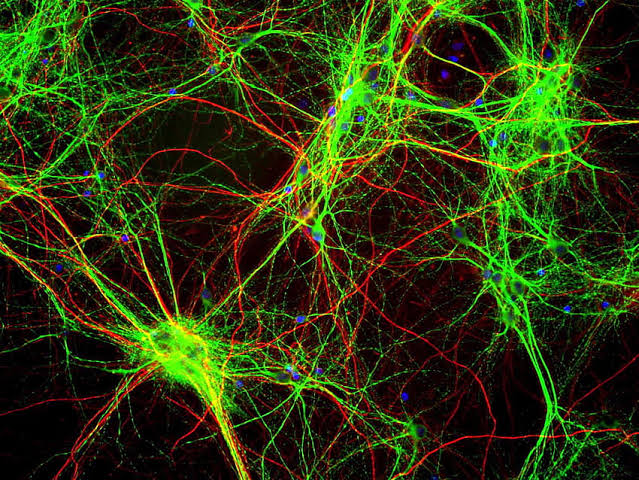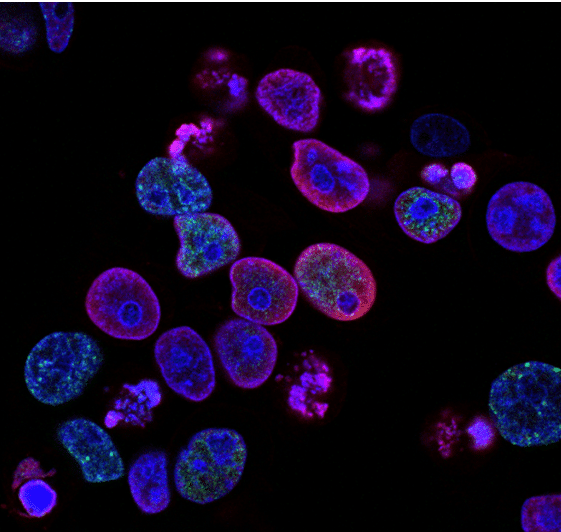The human brain, an intricate and awe-inspiring organ, is constantly evolving. Throughout our lives, it doesn’t just passively store memories or process sensory information. It actively changes, reorganizes, and adapts in response to experiences, environments, and learning. This remarkable capacity for change is called neuroplasticity, or brain plasticity. The term captures the brain’s ability to modify its structure and function throughout a person’s life, not only during childhood but well into adulthood.
In this article, we’ll explore the fascinating world of neuroplasticity, discussing how our brains adapt over time, why it happens, and how we can harness this power to improve our lives.
What is Neuroplasticity?
Neuroplasticity refers to the brain’s ability to change its structure and function in response to experience and learning. This concept was once considered a characteristic that only occurred during childhood. For years, scientists believed that by the time a person reached adulthood, the brain’s structure was set and couldn’t change. However, recent research has shattered this idea, revealing that the brain is much more adaptable than once thought.
Neuroplasticity is essentially the brain’s way of adjusting itself in response to new experiences, learning new skills, and recovering from injury. It involves changes at both the structural and functional levels of the brain. Structural plasticity refers to the physical changes in the brain’s neurons and connections, such as the growth of new synapses or the strengthening of existing ones. Functional plasticity refers to the brain’s ability to reassign functions from damaged areas to other, healthy regions. This plasticity occurs on different time scales – some changes happen rapidly, while others take place over the course of years.
The Mechanisms Behind Neuroplasticity
To fully appreciate how neuroplasticity works, we must delve into some of the brain’s fundamental mechanisms. The brain consists of billions of neurons, which communicate with one another through synapses – tiny gaps between neurons where signals are transmitted. When we learn something new or experience something significant, these synapses are either strengthened or weakened, depending on the nature of the experience. This process is called synaptic plasticity.
Synaptic Plasticity
Synaptic plasticity is the basis of learning and memory. When we repeat a behavior or activity, the synapses involved in that process become stronger. This is known as long-term potentiation (LTP). LTP involves an increase in the synaptic strength between two neurons that are repeatedly activated together. In contrast, when neurons are not frequently activated, the synaptic connections may weaken or even disappear, a phenomenon called long-term depression (LTD).
The strengthening of synapses forms the foundation for learning and memory. The more often we engage in an activity, the stronger the neural pathways related to that activity become, making it easier to perform that task in the future.
Structural Plasticity
In addition to synaptic changes, the brain can also undergo structural changes. This involves the growth of new neurons or the formation of new synaptic connections. Neurons in the brain can sprout new dendrites – the branching structures that receive signals from other neurons – which increases the complexity of neural networks. Structural plasticity plays a significant role in how the brain adapts to new experiences and learns new skills.
A key area where structural plasticity occurs is in the hippocampus, which is crucial for memory formation. Studies have shown that neurogenesis (the creation of new neurons) can occur in the hippocampus even in adults, contradicting earlier assumptions that new neurons only form during childhood.
Functional Plasticity
Functional plasticity refers to the brain’s ability to shift functions from one region to another, especially in the case of brain injury or damage. If a part of the brain becomes damaged, other regions can take over the lost function. For example, if a person experiences a stroke that damages the motor cortex, which controls movement, other areas of the brain may compensate for the loss, and over time, motor functions may be partially or completely restored.
Functional plasticity also allows the brain to adapt to new learning. When we acquire new skills, such as playing an instrument or learning a new language, the brain reorganizes itself to accommodate this new information. This is why practice and repetition are crucial for mastering any new skill.
The Role of Experience in Brain Adaptation
One of the most remarkable aspects of neuroplasticity is that it is largely experience-dependent. This means that the experiences we have in our lives shape the structure and function of our brains. Everything from our interactions with others to the way we engage with the world around us plays a role in how our brains adapt.
Learning and Memory
At the core of neuroplasticity is the process of learning. When we engage in a new activity or learn new information, our brain makes new connections, reinforcing the neural pathways related to that activity. This is why practice and repetition are key to mastering any skill. For example, when you first learn to play an instrument, your brain forms new connections in the motor cortex and auditory cortex to coordinate your fingers and your ability to hear the music. With continued practice, these pathways strengthen, and playing the instrument becomes more automatic.
The same process occurs when we learn a new language, acquire new knowledge, or develop a new habit. Our brains literally rewire themselves to accommodate this new information.
Social Interaction and Emotional Growth
Social experiences also play a significant role in shaping brain function. Research has shown that our brains are especially sensitive to social stimuli, and interactions with others can influence brain activity and development. For instance, positive social interactions can promote the release of neurochemicals like oxytocin, which promotes bonding and emotional regulation.
Conversely, chronic stress or negative social interactions can have detrimental effects on brain health. The brain’s stress response system, involving the amygdala and hypothalamus, can be activated by negative emotions, which in turn affects areas responsible for memory, cognition, and emotional regulation. Over time, this can lead to changes in the brain’s structure and function, affecting a person’s ability to cope with stress and emotions.
Physical Activity and Neuroplasticity
Exercise is another powerful factor that promotes brain plasticity. Physical activity has been shown to increase the production of brain-derived neurotrophic factor (BDNF), a protein that supports the survival and growth of neurons. BDNF has been linked to cognitive functions such as learning, memory, and problem-solving. Regular physical exercise, particularly aerobic exercise, has been shown to enhance neurogenesis in the hippocampus, improve cognitive function, and even help protect the brain against neurodegenerative diseases like Alzheimer’s.
In fact, some studies suggest that exercise can boost neuroplasticity to the same extent as cognitive training. The combination of physical and mental exercises creates a powerful synergy that enhances brain health and adaptability.
Brain Plasticity and Recovery After Injury
One of the most fascinating aspects of neuroplasticity is its role in recovery after brain injuries or strokes. The brain has an extraordinary ability to rewire itself and compensate for damage, a phenomenon that has been observed in countless individuals who have suffered brain trauma.
After a stroke, for example, the brain often forms new connections to bypass the damaged areas. The extent of recovery depends on various factors, such as the severity of the injury, the individual’s age, and the timing and type of rehabilitation.
Rehabilitation and Neuroplasticity
Rehabilitation plays a crucial role in promoting brain plasticity after injury. Therapies that involve repetitive tasks, physical exercises, and cognitive training can stimulate the brain to reorganize and form new connections. In some cases, patients who have lost the ability to speak or move may regain function through intensive therapy and neuroplasticity-driven interventions. This is why early intervention is so critical in cases of brain injury, as the brain is most responsive to changes in the first few weeks or months after trauma.
The Lifelong Process of Brain Adaptation
Neuroplasticity doesn’t stop once we reach adulthood. In fact, the brain continues to adapt and change throughout our lives, even as we age. However, the capacity for plasticity tends to decline with age, and the brain becomes less flexible as we grow older. Despite this, studies show that older adults can still benefit from neuroplasticity, particularly when engaging in activities that challenge the brain, such as learning new skills, solving puzzles, or playing musical instruments.
In fact, older adults who maintain an active lifestyle – both physically and mentally – are more likely to preserve cognitive function and even stave off age-related decline. This highlights the importance of lifelong learning and engagement in maintaining brain health.
Harnessing the Power of Neuroplasticity
Understanding neuroplasticity gives us the tools to enhance our brain health and cognitive abilities. Here are a few ways we can harness the power of neuroplasticity:
- Lifelong Learning: Continuously challenging your brain by learning new skills or information helps strengthen neural pathways and promotes cognitive health. Try learning a new language, picking up an instrument, or taking up a new hobby.
- Physical Exercise: Regular physical activity promotes the production of BDNF and supports neurogenesis, which helps maintain cognitive function. Aim for at least 30 minutes of moderate exercise most days of the week.
- Mindfulness and Stress Reduction: Chronic stress can negatively impact brain plasticity. Practices like meditation, yoga, and mindfulness can reduce stress and promote emotional regulation, supporting brain health.
- Healthy Diet: A nutritious diet rich in antioxidants, omega-3 fatty acids, and other brain-boosting nutrients supports neuroplasticity and overall brain function. Eating a balanced diet can reduce inflammation and oxidative stress, which can impair neuroplasticity.
- Social Engagement: Positive social interactions can promote neuroplasticity and emotional well-being. Engage in social activities that stimulate your brain, such as meaningful conversations or group activities.
Conclusion
The brain’s ability to adapt, change, and grow over time is a testament to its resilience and versatility. Neuroplasticity is a lifelong process that continues to shape our minds, whether we’re learning new skills, recovering from injury, or simply navigating the challenges of daily life. By understanding and harnessing the power of neuroplasticity, we can improve our mental and physical health, sharpen our minds, and even recover from brain injuries. The brain, it seems, is always capable of transformation, and it’s up to us to unlock its full potential.






